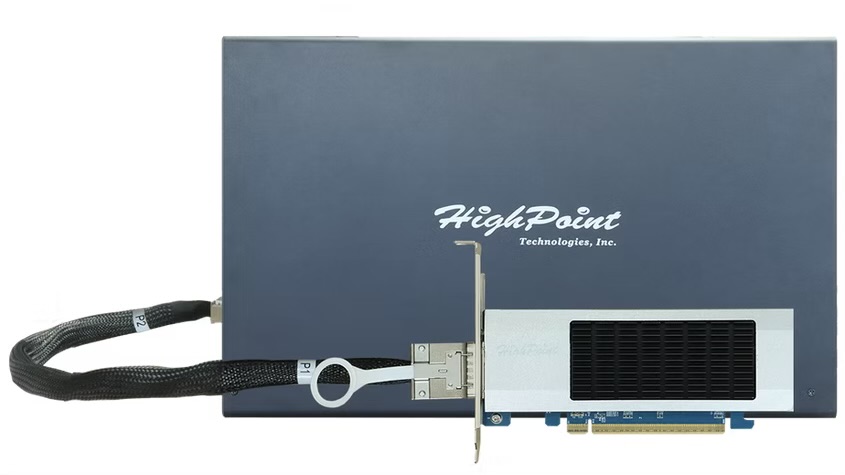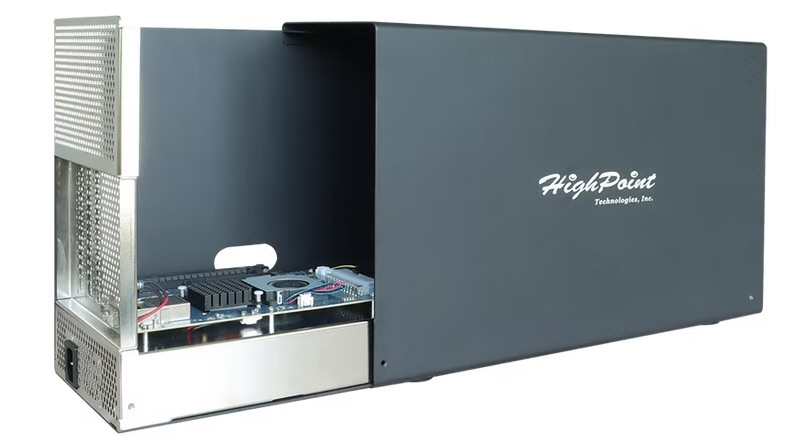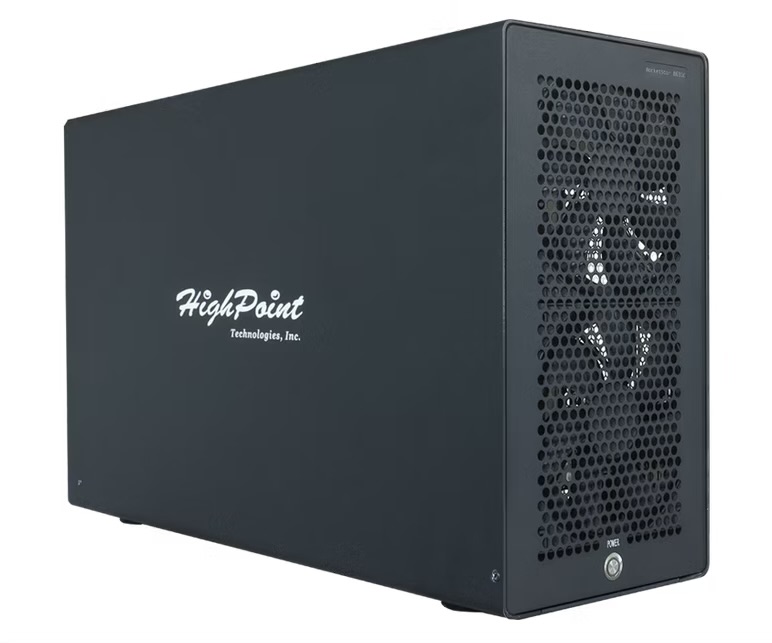
HighPoint Technologies has introduced two external PCIe GPU kits designed for professionals who need serious graphics performance in systems that can’t accommodate full-size cards internally. The RocketStor 8631CW and 8531AW enclosures are built for rackmount servers, slim towers, and any setup where space and airflow are tight but GPU performance still matters.
Instead of relying on risers or Thunderbolt docks, these kits use a direct PCIe connection through a CDFP cable. The 8531AW supports full PCIe Gen4 x16 bandwidth, while the newer 8631CW takes it further with full Gen5 x16 speed. That means up to 64GB per second of dedicated throughput straight to the GPU, with no bottlenecks or thermal compromises.
Both enclosures support any operating system with native PCIe device support, including Linux and Windows 11. No drivers are needed. The GPU is detected just like it would be if installed directly on the motherboard.

Both kits come with a low-profile host card that installs into a single PCIe slot. The Rocket 1634C powers the 8531AW and operates at Gen4 speeds. The Rocket 1634D powers the 8631CW and handles full Gen5 traffic. Each card includes a 1-meter CDFP cable to connect to the external enclosure, which houses the GPU and supplies up to 600 watts of power.
The enclosures support full-length cards. The 8531AW fits GPUs up to 360 millimeters long and 75 millimeters wide. The 8631CW has slightly more clearance, supporting cards up to 370 millimeters long and 88 millimeters wide. Both can handle triple-slot designs including those used by high-end RTX5090 and AI-focused GPUs.
HighPoint uses Broadcom’s PEX 89048 switch in both host cards. The 8631CW enclosure also includes a PCIe 5.0 retimer from Astera Labs to ensure link stability under load. This helps prevent signal degradation over the cable, which is essential when pushing full Gen5 speeds in demanding workloads.
Monitoring is another strong point. Both enclosures offer real-time power tracking, fan speed control, and thermal alerts. The system can sound an audible alarm if temperatures climb too high or fans slow down. There’s also a mute button for data center environments. HighPoint’s utility software lets users update firmware across the system and access logs if needed.

These are plug-and-play devices. No drivers are required. As long as the operating system supports native PCIe devices, everything works. That includes Linux, Windows, and BSD systems. The GPU shows up just like it would if it were plugged directly into the motherboard.
This setup is well suited for creative professionals, scientists, engineers, and anyone else who needs powerful GPU acceleration but doesn’t have space for a full card internally. It’s also a practical option for small labs or render farms that already have infrastructure in place and don’t want to rebuild everything just to fit larger graphics cards.
CDFP cabling might be unfamiliar to some users, but it allows for high-bandwidth connections in a very compact form. That makes it ideal for rackmount scenarios where standard PCIe risers or wide connectors would be difficult to route cleanly.
HighPoint hasn’t announced exact pricing or MTBF yet, but these are not consumer-focused products. They’re aimed at professionals who value stability, bandwidth, and clean integration over flashy features. These kits are about solving real problems with no nonsense.
If you’ve ever needed to run an RTX5090 in a 2U chassis or tried to cram a three-slot GPU into a workstation that clearly wasn’t designed for it, this solution finally makes it doable without compromise.

